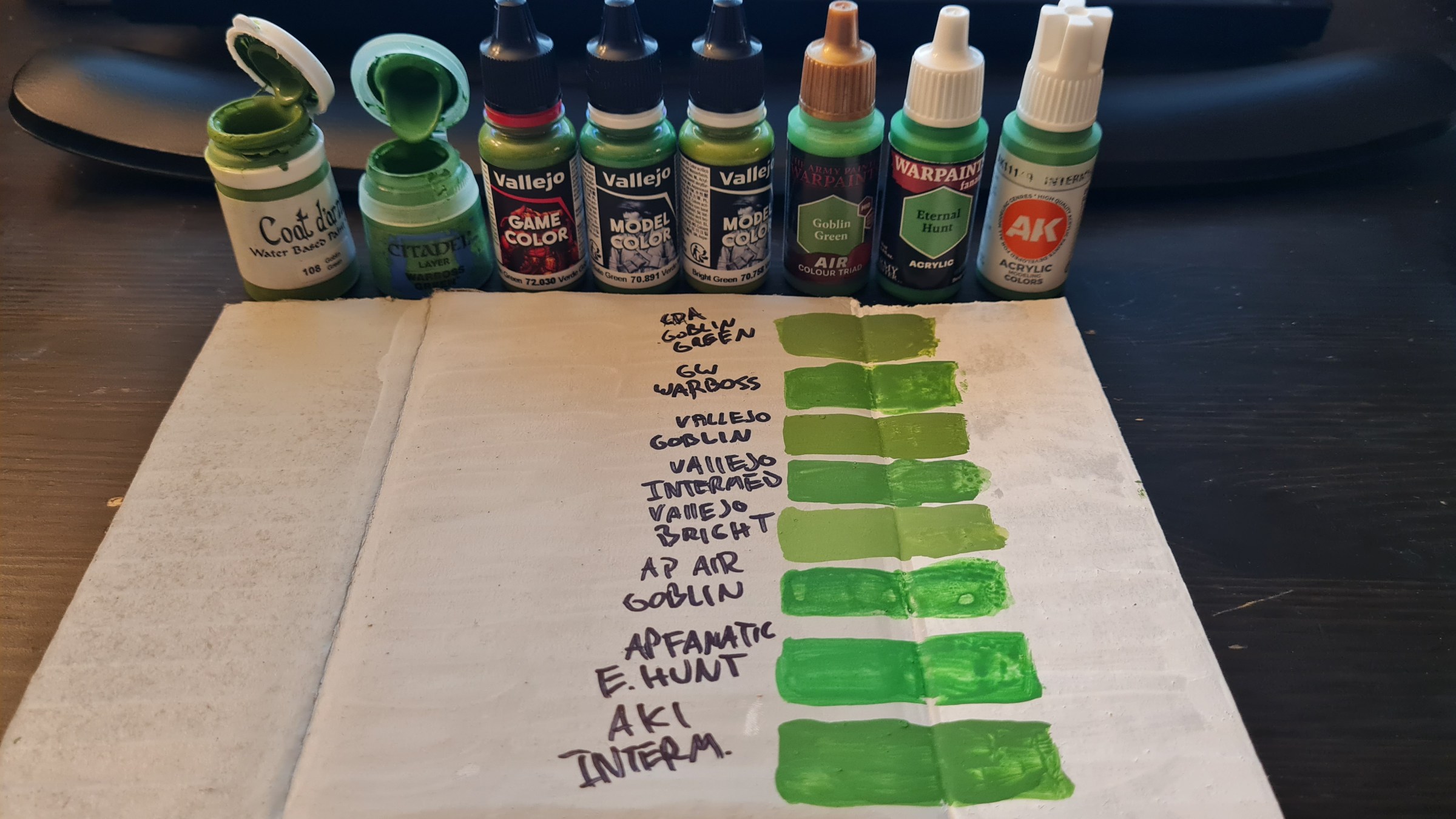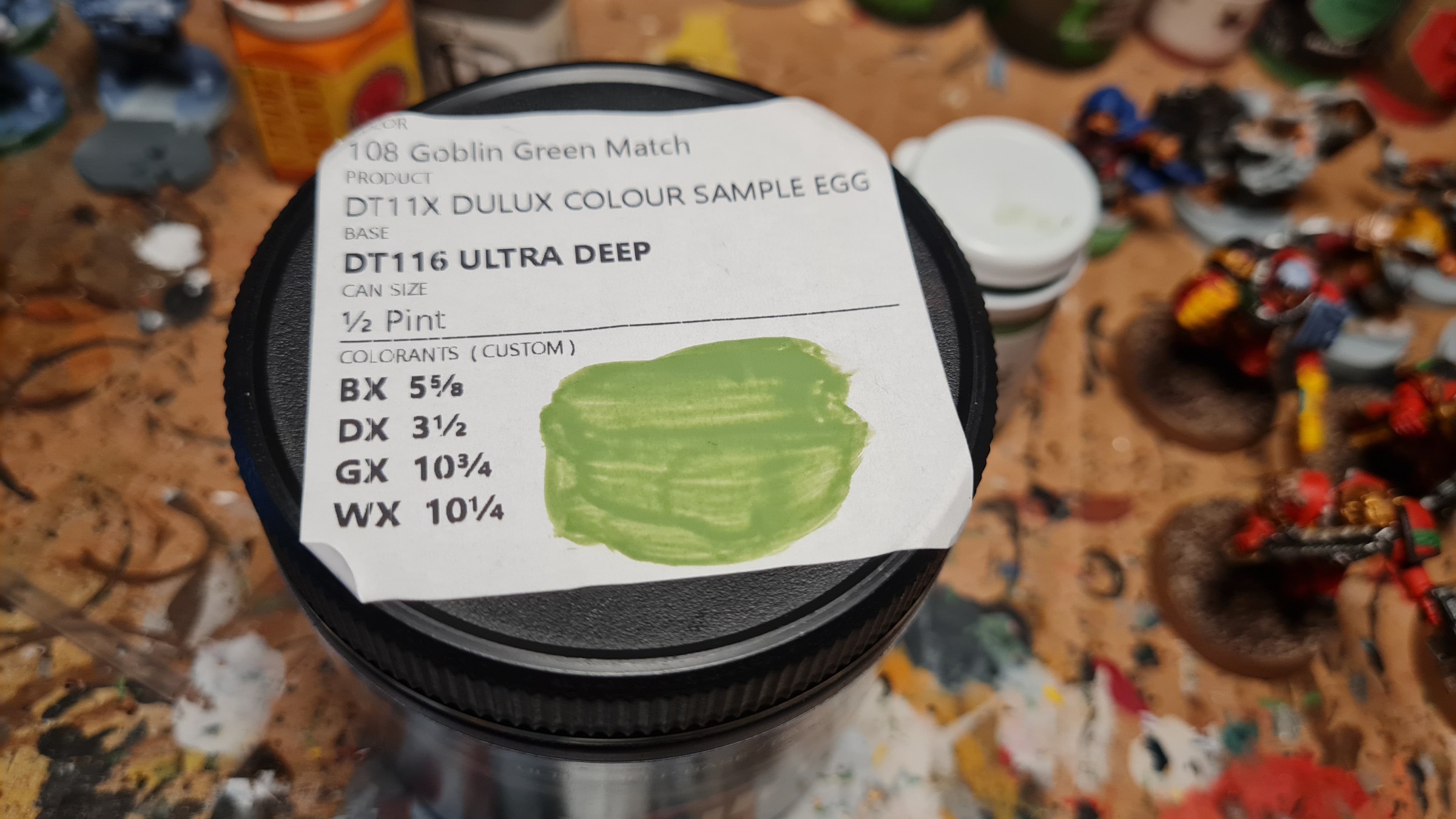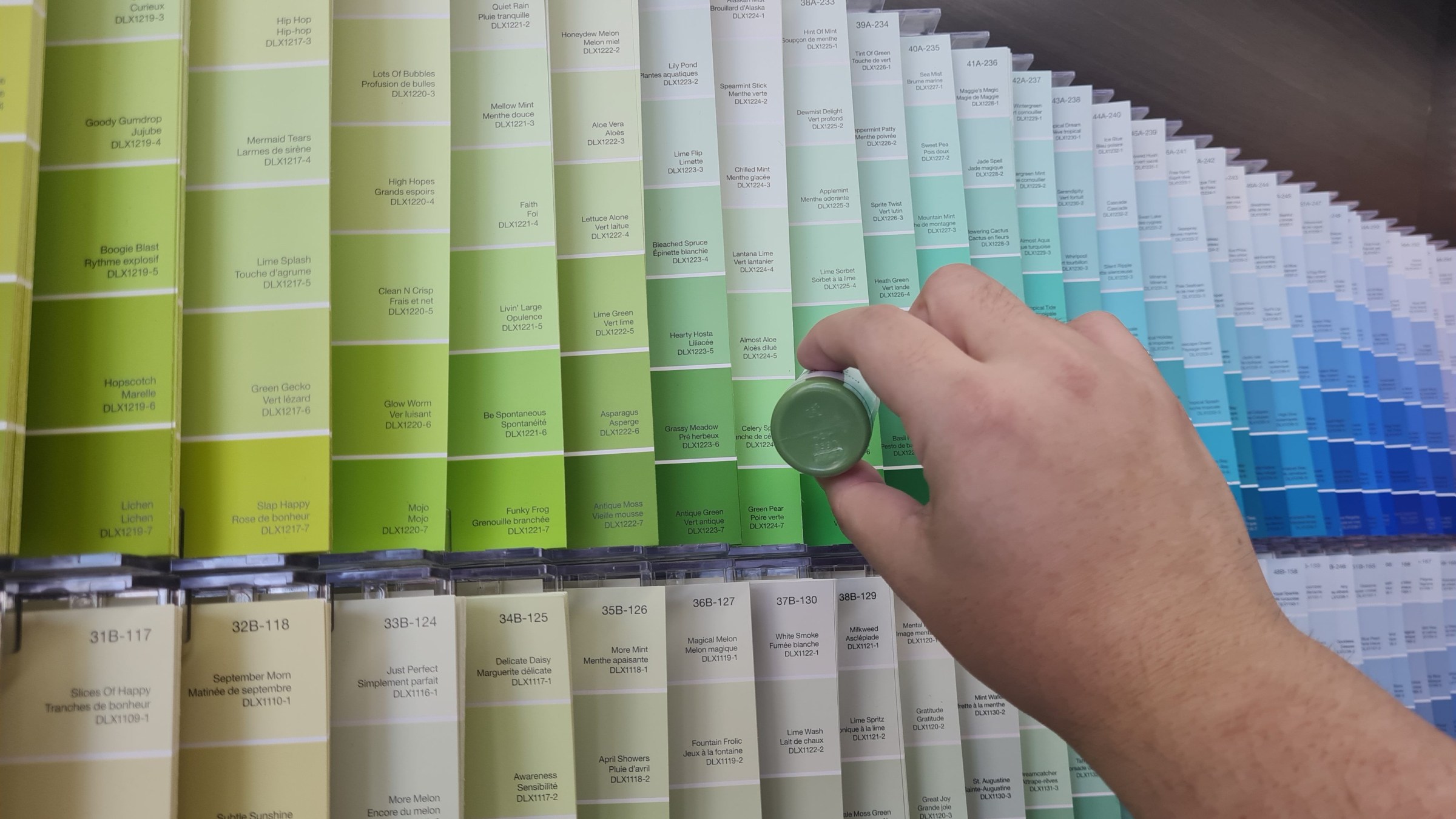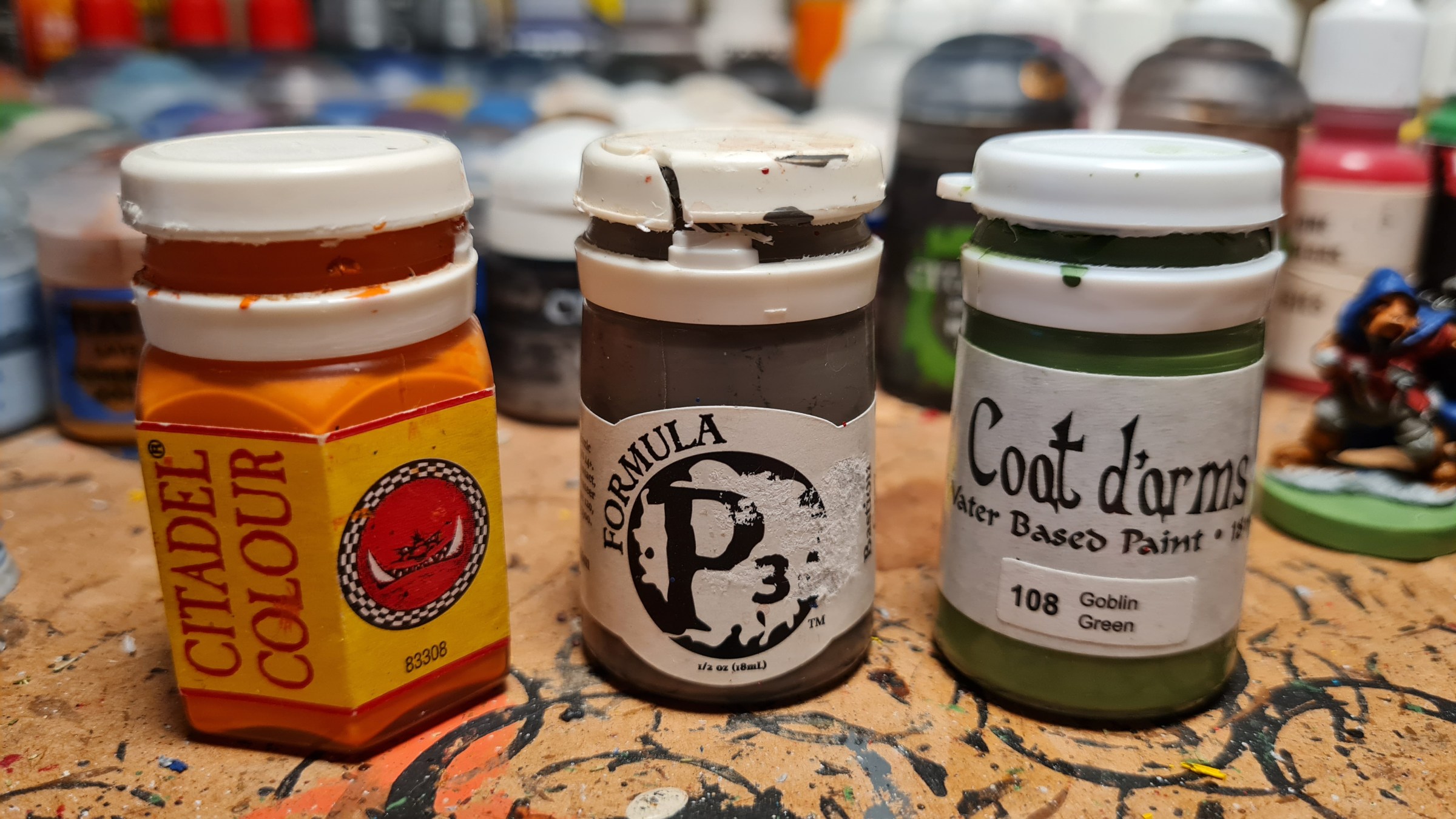The legend of Goblin Green: why gamers like one discontinued Warhammer paint more than all others
For a certain generation of gamers who grew up painting and playing Warhammer at the local mall’s Games Workshop, one paint color stands out from the rest: Goblin Green.
The color, somewhere between subtle olive green and vibrant grass green, was essential not only for those gathering an army of orcs and goblins.
It could be found on the base of almost every miniature in the mid-1990s to early 2000s, whether they were destined for the grassy plains of Warhammer Fantasy Battle or an abandoned space station in Warhammer 40,000.
“Most of the bases you saw (…) were these green bases, square or round, with Goblin Green painted around the edge of the base, Goblin Green over the texture, which looked like PVA glue and sand and maybe some rocks, and then a yellow drybrush over it,” says Adam Abramowicz, marketing manager of the miniature paint company The Army Painter.
“That was the foundation we all knew and loved.”
Miniature bases have become more diverse over the years, including muddy fields or crumbling cobblestones with corresponding brown or gray tones on the edges.
“As wargaming has become a bit grittier and more realistic, I think people will look back on Goblin Green fondly, because it’s a bit of a lurid color and a bit wacky,” said mini-painting YouTuber and former Games Workshop presenter Louise Sugden.
But there has been a growing interest lately in the Warhammer era of the 90s and early 2000s, unofficially known as Oldhammer or Middlehammer, thanks in part to videos from gaming or miniature influencers online. Games Workshop has also picked up on this and recently revived its Fantasy Battle range in the form of Warhammer: The Ancient World.
There’s one problem, though: Games Workshop’s paint line, Citadel Color, has changed significantly over the years, with completely different shades and names since the ’90s. That means you won’t find a brand new bottle of Goblin Green for sale in a Games Workshop store.
Even though other craft paint brands have similar shades of green – some even with the same name – none offers an exact color match, which has only helped build the legend of the fan favorite shade.
When British YouTuber Kevin McCullough recently returned to the hobby after falling away in the 2000s, he discovered his ‘iconic’ Goblin Green was nowhere to be seen.
“I bought Citadel’s Warboss (green) and started painting with it, but it just didn’t look the same,” he told Polygon.
On his YouTube channel, he compared other brands’ Goblin Greens in three videos to see if they were closer to the original than Warboss Green, which leans more toward the bluish side.
He found that retro-themed brands like Warcolours and Coat d’Arms came closest, but still concluded that the original triumphed as his favorite.
Goblin Green’s ubiquity can be traced back to before Warhammer became a household name, when the hobby grew out of British historical gambling circles. Reconstructions of the War of the Roses before battles between elves and vampires took place on tables with green play mats.
Strictly speaking, there is not one color that can be called Goblin Green.
If you closely examine the bases of miniatures in dioramas from old Warhammer rulebooks or catalogs, you will notice that many of them have slightly different shades of green.
In addition to variables like photography, lighting, and inconsistent color printing, this was likely due to irregularities in the paint itself, according to Duncan Rhodes, a mini-painting YouTuber and former Games Workshop host.
If a can of paint has been allowed to settle or separate for a little longer, or if it has not been stirred enough before being put to market, the tone may be slightly off.
“That’s probably why you see that when other companies use Goblin Green paint, even if they originally tried to match the color to the original paint, there will likely be subtle differences,” he told Polygon.
Over the years, Games Workshop has also used different companies to produce its paints, each with slightly different colors, even though they had the same name.
The British HMG Paints already made GW’s paints in the mid-1990s. In 1998 it reportedly switched to a supplier in France. The French Goblin Green is slightly bluer than the yellower shade of HMG, and closer in hue to the modern Warboss Green.
What exactly is in the paint remains a mystery. Unlike artist paint lines such as Winsor & Newton and Golden, which list individual color pigments in their products, most mini paint lines do not disclose their color formulations.
An HMG representative declined to comment on the current and past miniature paints, saying the partnerships are protected under non-disclosure agreements.
The difficulty in finding a perfect match with a classic paint could be due to the changing priorities of these paint companies, rather than technical issues.
“We could easily match the original Goblin Green (at The Army Painter). If someone had a bottle of it and sent it to us, we could match it 100%,” Abramowicz said.
“Now, hit the nail on the head and match each color with the performance benefits and features we want? That’s a different story.”
Modern paints tend to prioritize coverage, meaning even a novice painter can achieve even coverage of any color in one to two thin coats over a neutral undercoat such as white, black or gray.
This often involves adding opaque pigments such as titanium white, which also reduces the vibrancy of the paint, sometimes resulting in a color that is slightly grayish or pastel.
The Citadel paints of the 1990s, including Goblin Green, were generally brighter and more vibrant than many modern paints. But they were often almost transparent and required several coats to avoid a streaky finish.
The curious case of Coat d’Arms
If you ask gamers for a Goblin Green paint closest to the original, many will mention a British brand called Coat d’Arms, with some even claiming it’s the exact same paint with a new label.
The truth is a little more complicated.
According to Mike Lewis, who owned Coat d’Arms from 2006 until his retirement last July, the brand was founded by Bill Lucas, who worked for Games Workshop before founding his own company, Gladiator Games.
Lucas went to HMG to produce a line of historical wargaming paints. But it just happened to be the ’90s, right after Games Workshop ended its relationship with HMG.
“As I understand it, the guy at HMG said to Bill, ‘We’ve got all this paint that we used to make for Games Workshop. They move. Do you want it?’” Lewis recalled in an interview with Polygon.
“So the first 43 colors in the Coat d’Arms fantasy range were based on the colors from Games Workshop’s original 1990s fantasy range. And additional colors have been added over the years.”
Goblin Green is still the best-selling Coat d’Arms paint, sometimes by a factor of 10 to one compared to other colors, Lewis said.
But despite the shared history, new bottles of Coat d’Arms paint aren’t exactly the same as those from the ’90s. Lewis said formulas have changed over time, in part because some ingredients have become scarcer over the years, necessitating alternatives.
It may be unsatisfying to hear that it may be impossible to perfectly recreate the Goblin Green of a gamer’s 1990s-tinged dreams. But as Lewis recalls, the idea of consistent color is more fantasy than reality to begin with.
When his predecessor, Bill Lucas, went to HMG for its World War II range of paints, he discovered that the very same company painted the British Army’s tanks during the war.
The catch? The shade of green used for those tanks varied from month to month depending on the materials available at the time.
“I always found it funny because there is always an argument about what color bronze green should be. And they were worried about whatever they could get their hands on,” he said.
Jonathan Ore is a writer and editor for CBC Radio Digital in Toronto. He regularly reports on the video games industry for CBC Radio programs across the country and has also covered arts and entertainment, technology and the games industry for CBC News. You can read and listen to his radio documentary about Warhammer 40K here.




